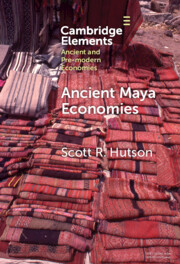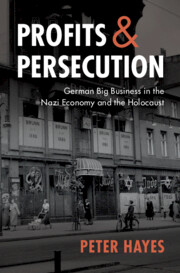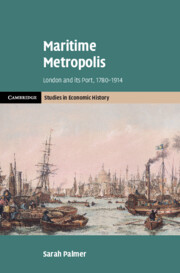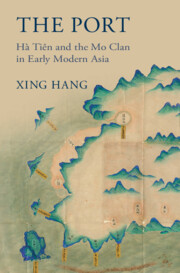Refine search
Actions for selected content:
26946 results in Economic history
4 - The Commerce of the Kingdom
- from Part I - The Sail Era
-
- Book:
- Maritime Metropolis
- Published online:
- 21 November 2024
- Print publication:
- 28 November 2024, pp 94-120
-
- Chapter
- Export citation
Figures, Table and Maps
-
- Book:
- Maritime Metropolis
- Published online:
- 21 November 2024
- Print publication:
- 28 November 2024, pp ix-x
-
- Chapter
- Export citation
2 - Managing Hybridity
-
- Book:
- The Port
- Published online:
- 21 November 2024
- Print publication:
- 28 November 2024, pp 66-92
-
- Chapter
- Export citation
Acknowledgments
-
- Book:
- The Port
- Published online:
- 21 November 2024
- Print publication:
- 28 November 2024, pp ix-xiv
-
- Chapter
- Export citation
Additional material
-
- Book:
- The Port
- Published online:
- 21 November 2024
- Print publication:
- 28 November 2024, pp xv-xviii
-
- Chapter
- Export citation
Frontmatter
-
- Book:
- Kerala, 1956 to the Present
- Published online:
- 31 May 2024
- Print publication:
- 28 November 2024, pp i-iv
-
- Chapter
- Export citation
Conclusion
-
- Book:
- The Port
- Published online:
- 21 November 2024
- Print publication:
- 28 November 2024, pp 276-290
-
- Chapter
- Export citation
Preface
-
- Book:
- Kerala, 1956 to the Present
- Published online:
- 31 May 2024
- Print publication:
- 28 November 2024, pp ix-x
-
- Chapter
- Export citation
3 - Monopoly, Competition and Control
- from Part I - The Sail Era
-
- Book:
- Maritime Metropolis
- Published online:
- 21 November 2024
- Print publication:
- 28 November 2024, pp 62-93
-
- Chapter
- Export citation
6 - Emporium of the World
- from Part II - The Steam Era
-
- Book:
- Maritime Metropolis
- Published online:
- 21 November 2024
- Print publication:
- 28 November 2024, pp 147-179
-
- Chapter
- Export citation
9 - Conclusion
-
- Book:
- Kerala, 1956 to the Present
- Published online:
- 31 May 2024
- Print publication:
- 28 November 2024, pp 144-149
-
- Chapter
- Export citation
List of Tables and Figures
-
- Book:
- Kerala, 1956 to the Present
- Published online:
- 31 May 2024
- Print publication:
- 28 November 2024, pp vii-viii
-
- Chapter
- Export citation
Preface
-
- Book:
- Maritime Metropolis
- Published online:
- 21 November 2024
- Print publication:
- 28 November 2024, pp xi-xii
-
- Chapter
- Export citation

Ancient Maya Economies
-
- Published online:
- 26 November 2024
- Print publication:
- 19 December 2024
-
- Element
- Export citation

Profits and Persecution
- German Big Business in the Nazi Economy and the Holocaust
-
- Published online:
- 22 November 2024
- Print publication:
- 30 January 2025

Maritime Metropolis
- London and its Port, 1780–1914
-
- Published online:
- 21 November 2024
- Print publication:
- 28 November 2024

The Port
- Hà Tiên and the Mo Clan in Early Modern Asia
-
- Published online:
- 21 November 2024
- Print publication:
- 28 November 2024
A Reappraisal of Albert Aftalion’s Theory of Structural Transformation in an Era of Decarbonization – CORRIGENDUM
-
- Journal:
- Business History Review / Volume 99 / Issue 1 / Spring 2025
- Published online by Cambridge University Press:
- 21 November 2024, p. 181
- Print publication:
- Spring 2025
-
- Article
-
- You have access
- Open access
- HTML
- Export citation
Nonmonetary and monetary explanations for inflation: the UK in the 1970s
-
- Journal:
- Financial History Review / Volume 31 / Issue 2 / August 2024
- Published online by Cambridge University Press:
- 07 November 2024, pp. 228-244
-
- Article
-
- You have access
- Open access
- HTML
- Export citation
3 - Edward A. Tenenbaum’s Family Roots, Adolescence, and Military Experience until 1946
-
- Book:
- Edward A. Tenenbaum and the Deutschmark
- Published online:
- 19 October 2024
- Print publication:
- 31 October 2024, pp 94-309
-
- Chapter
- Export citation
